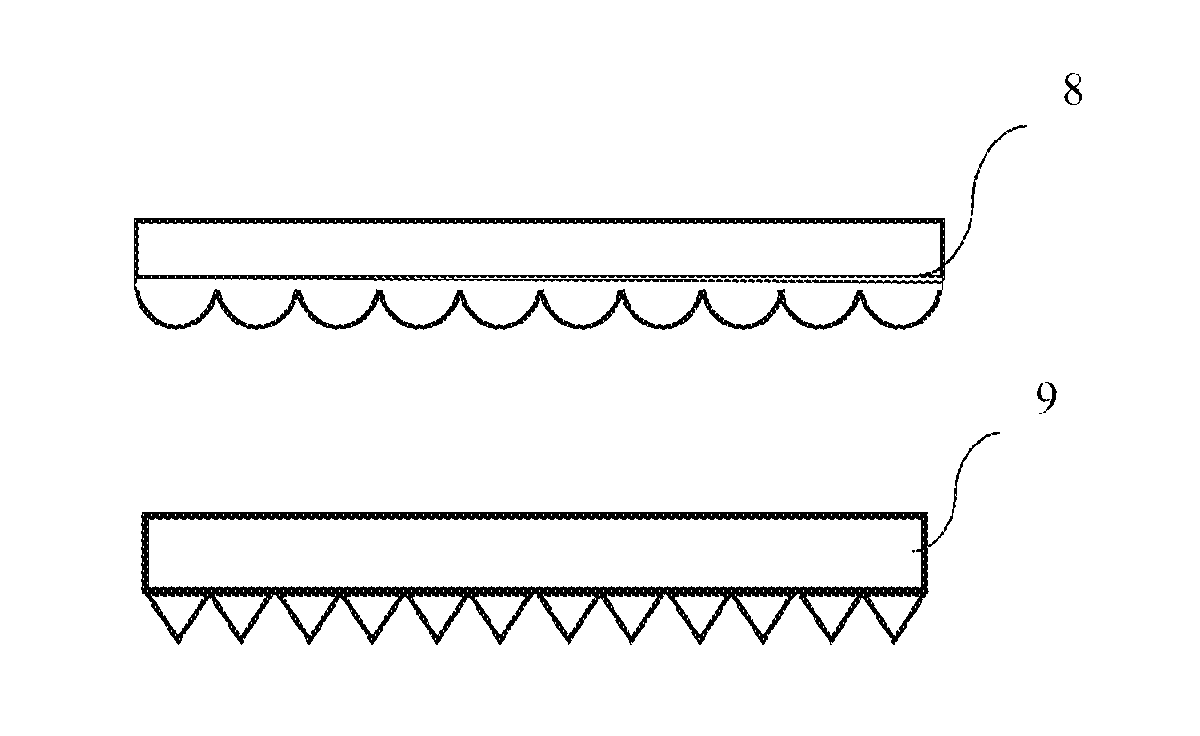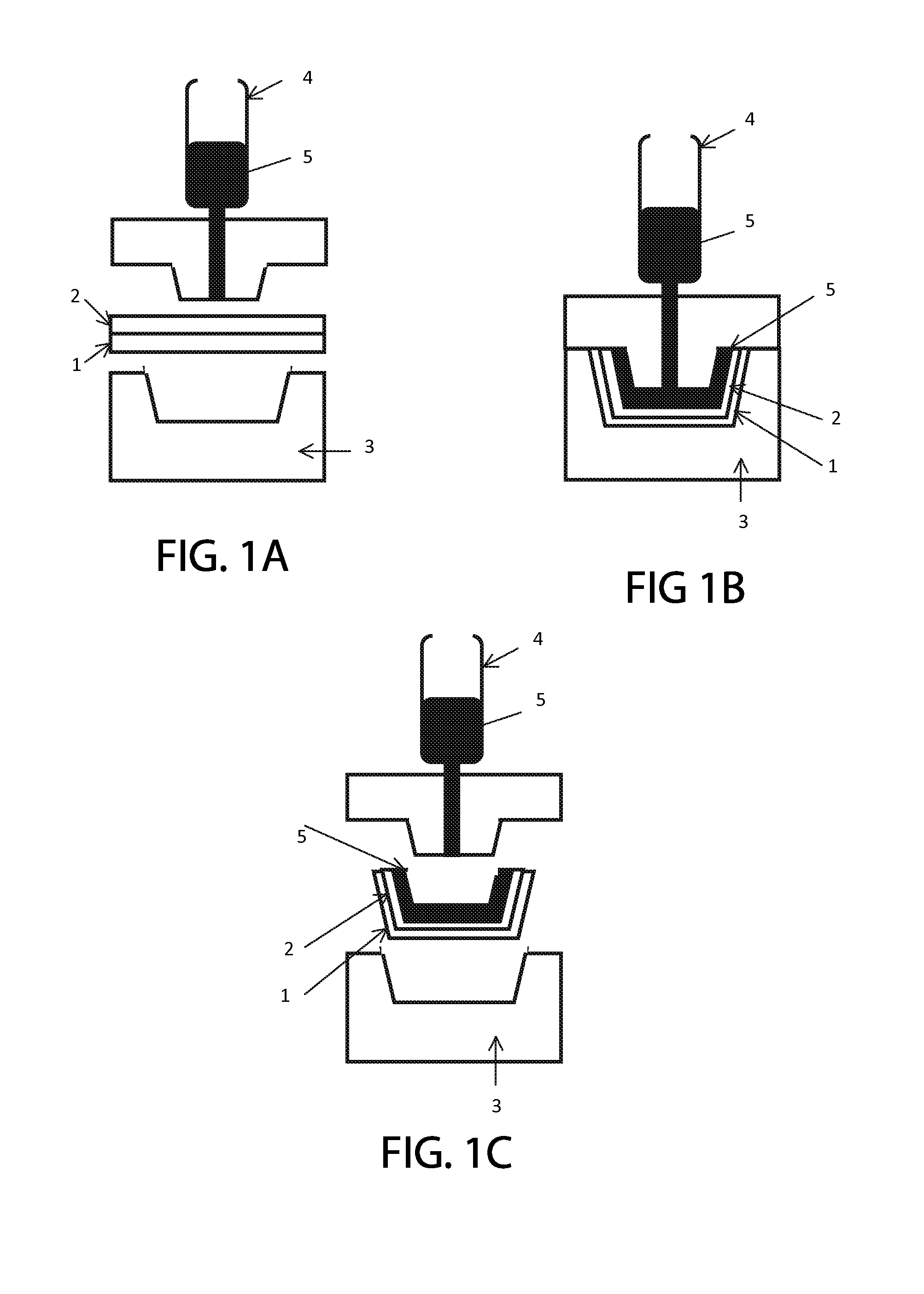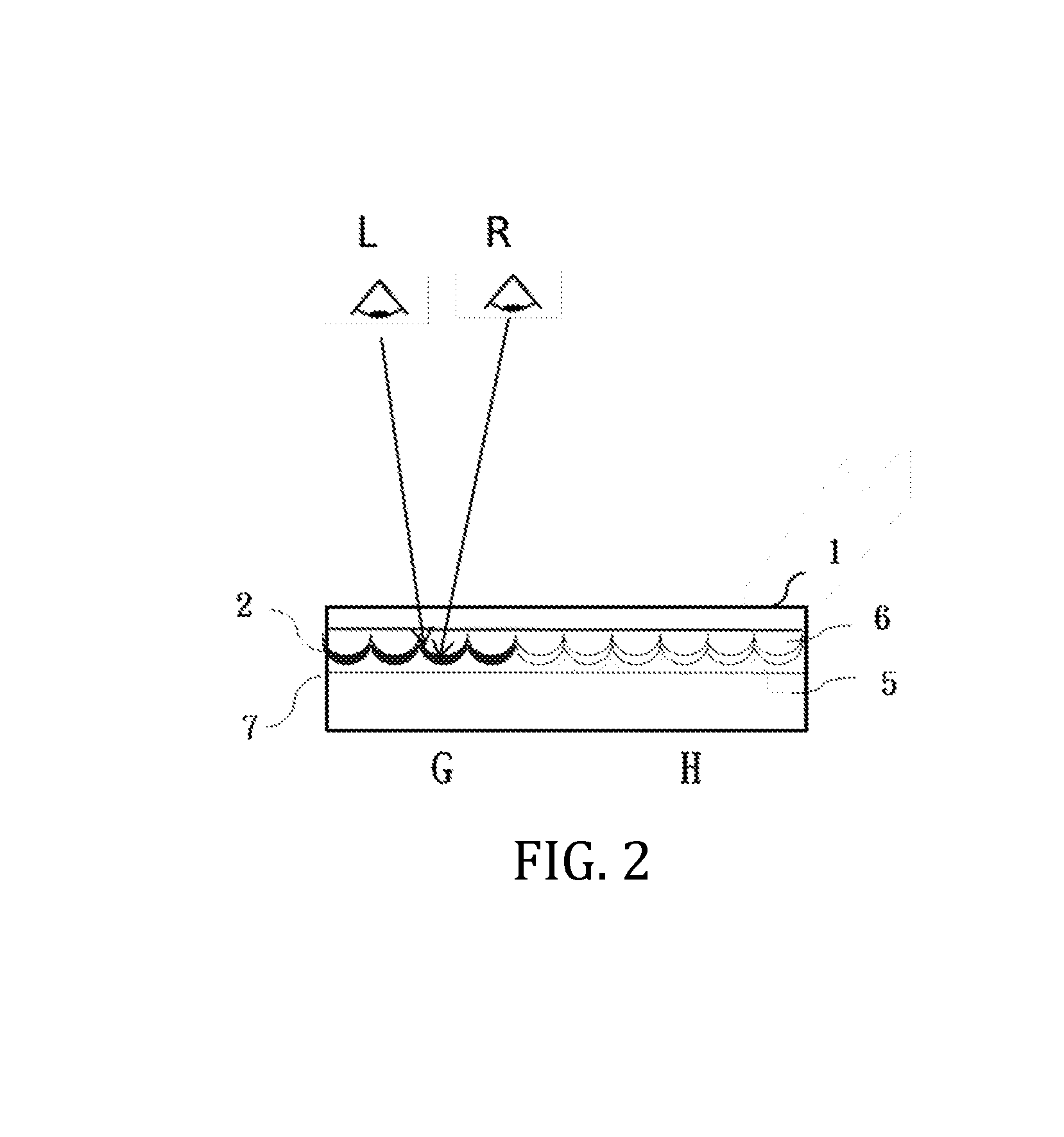3D Printed Decorative Film And Products Made Thereof
- Summary
- Abstract
- Description
- Claims
- Application Information
AI Technical Summary
Benefits of technology
Problems solved by technology
Method used
Image
Examples
embodiment 1
[0062]The transparent substrate material is 120 cm long and 80 cm wide MLF EverRay® LM, a 188 μm thick half spherical lens film made of ethylene terephthalate (PET), from Kolon company in Korea. It is a film with heat defection temperature is 120° C. and contains one-side UV-cured half spherical lens with defection temperature is 180° C. The lens structures are 42 μm in height and a lens density of 70,000 per square. Graphic images were printed with UV-curable inks with a resolution of 600 dots per inch (360,000 dots per square inch). The resulting 3D printed decorative film has a printing resolution 5 times of the lens density, which provides a good stereo visual effect and image resolution.
embodiment 2
[0063]A transparent substrate made from a Cellulose triacetate film is 120 cm long and 80 cm wide with heat deflection temperature of 80° C. It contains UV-curable epoxy half spherical lenses in 20 μm height with a heat deflection temperature of 250° C. The epoxy resin is EPO-TEK® epoxy. The density of the half spherical lenses is 50,000 per square inch. It was printed with UV-curable Ink with a resolution of 800 dots per inch (640,000 dots per square inches). Such 3D printed decorative film has a printing resolution 13 times of its lens density. Such decorative film provides an excellent stereo effect and image resolution.
embodiment 3
[0064]An acrylic film, 120 cm long and 80 cm wide, has one-side half spherical lens structure in lens density of 70,000 per square inch gone through the same process of embodiment 1. The printed layer 2 has printing resolution of 1300 dots per inch (1,690,000 dots per square inch). Such 3D printed decorative film has a printing resolution 24 times of its lens density. The resulting decorative film has a fantastic stereo effect but the image resolution decreases dramatically.
PUM
| Property | Measurement | Unit |
|---|---|---|
| Temperature | aaaaa | aaaaa |
| Density | aaaaa | aaaaa |
| Flexibility | aaaaa | aaaaa |
Abstract
Description
Claims
Application Information
 Login to View More
Login to View More - R&D
- Intellectual Property
- Life Sciences
- Materials
- Tech Scout
- Unparalleled Data Quality
- Higher Quality Content
- 60% Fewer Hallucinations
Browse by: Latest US Patents, China's latest patents, Technical Efficacy Thesaurus, Application Domain, Technology Topic, Popular Technical Reports.
© 2025 PatSnap. All rights reserved.Legal|Privacy policy|Modern Slavery Act Transparency Statement|Sitemap|About US| Contact US: help@patsnap.com



